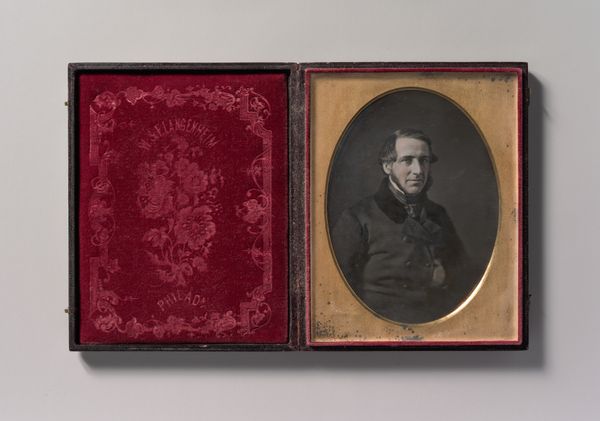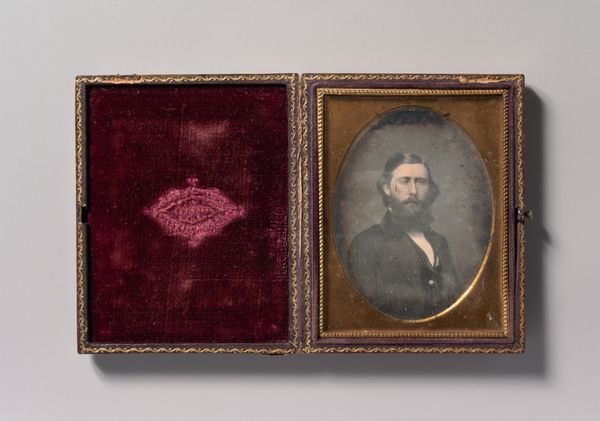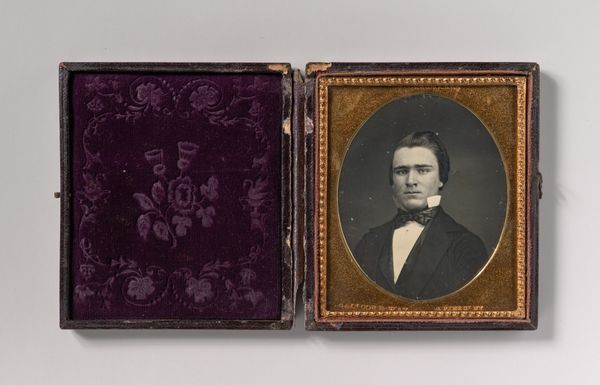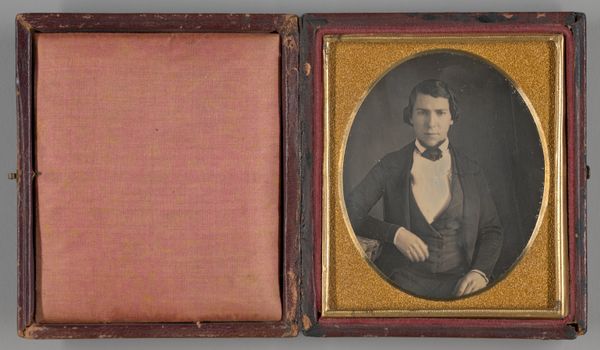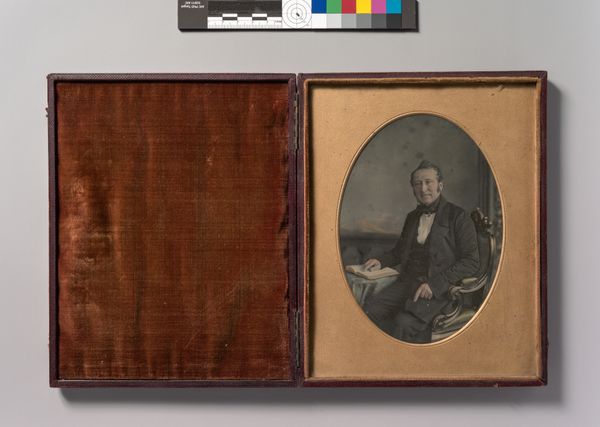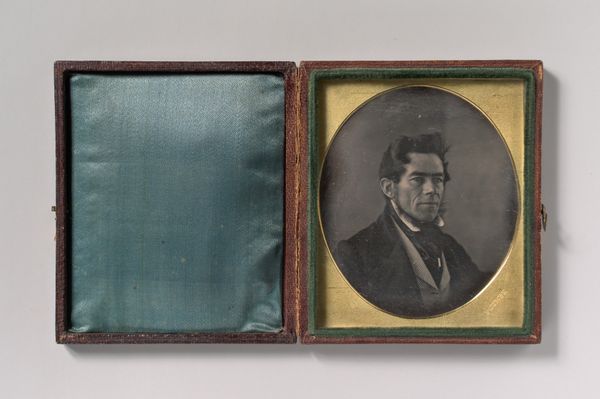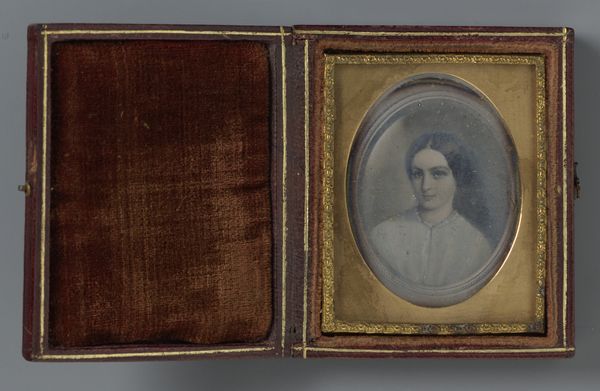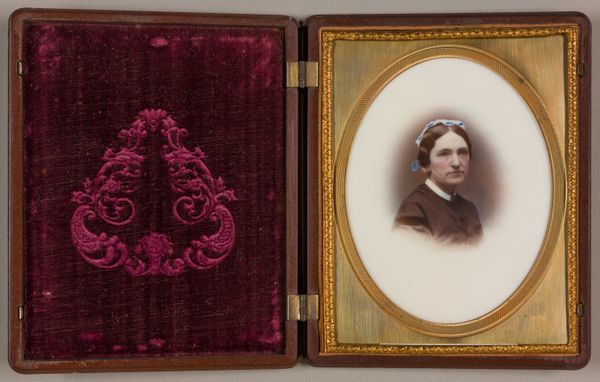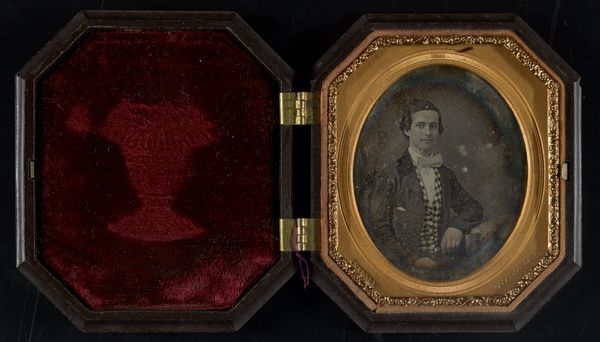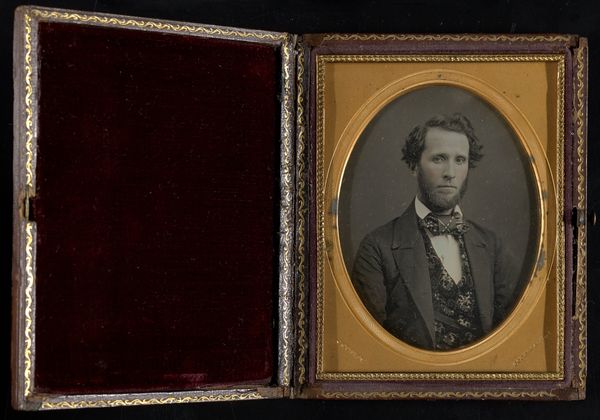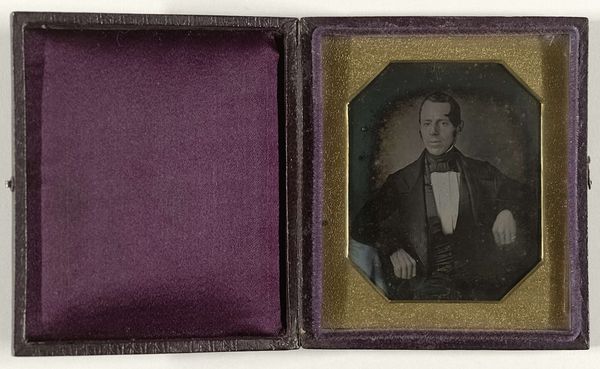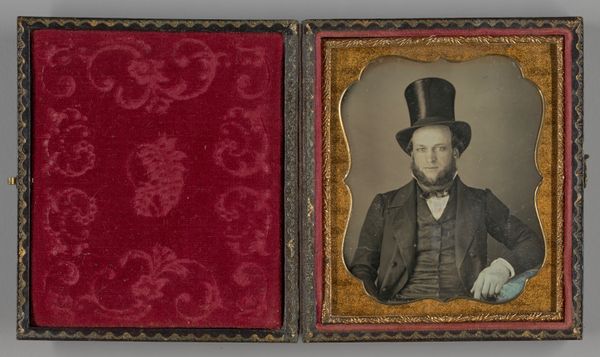
acrylic-paint
#
portrait
#
acrylic-paint
#
romanticism
#
men
#
genre-painting
#
miniature
Dimensions: 3 x 2 1/2 in. (7.6 x 6.3 cm)
Copyright: Public Domain
Curator: Let's discuss this miniature portrait, Edward S. Dodge’s depiction of John Wood Dodge, made between 1833 and 1837. Editor: I find it incredibly intimate. The limited color palette draws my attention to the detail in the subject’s face, a kind of concentrated viewing. Curator: Absolutely. These miniatures were often kept in lockets or cases and carried on one's person. In this way, the portrait acts as a token of intimacy, strengthening bonds during long absences, even after death. The painting’s dimensions provided portability but also control of access and view. Editor: You see how the dark background fades behind the head creating a halo, and sets off his striking pallor and elegant attire? A simple color choice serves the dual function of adding depth and accentuating his face. The careful balance within the oval is remarkable. Curator: He's portrayed at a time when miniature portraits were transitioning from symbols of wealth for the elite to increasingly accessible items for the middle class. This shift reflected broader social changes. We're looking at a manifestation of a democratizing artistic movement, facilitated in part by the rising merchant class. Editor: Democratizing, perhaps. But even within that context, there's a very refined execution, which speaks of artistic excellence. The painterly skill required for such exacting details, in the sitter’s beard, or the light reflected in the eyes is breathtaking. Curator: I agree. These portraits became potent markers of social identity, as painted portraits came to symbolize status and self-expression for a burgeoning population. To me this is not simply a representation, it's an artifact laden with cultural meaning. Editor: A little window into the past that is both artful and informative. I think the combination of these approaches brings it alive, wouldn't you agree? Curator: Certainly. By looking through the lens of history and aesthetics, we get a rich understanding.
Comments
No comments
Be the first to comment and join the conversation on the ultimate creative platform.
